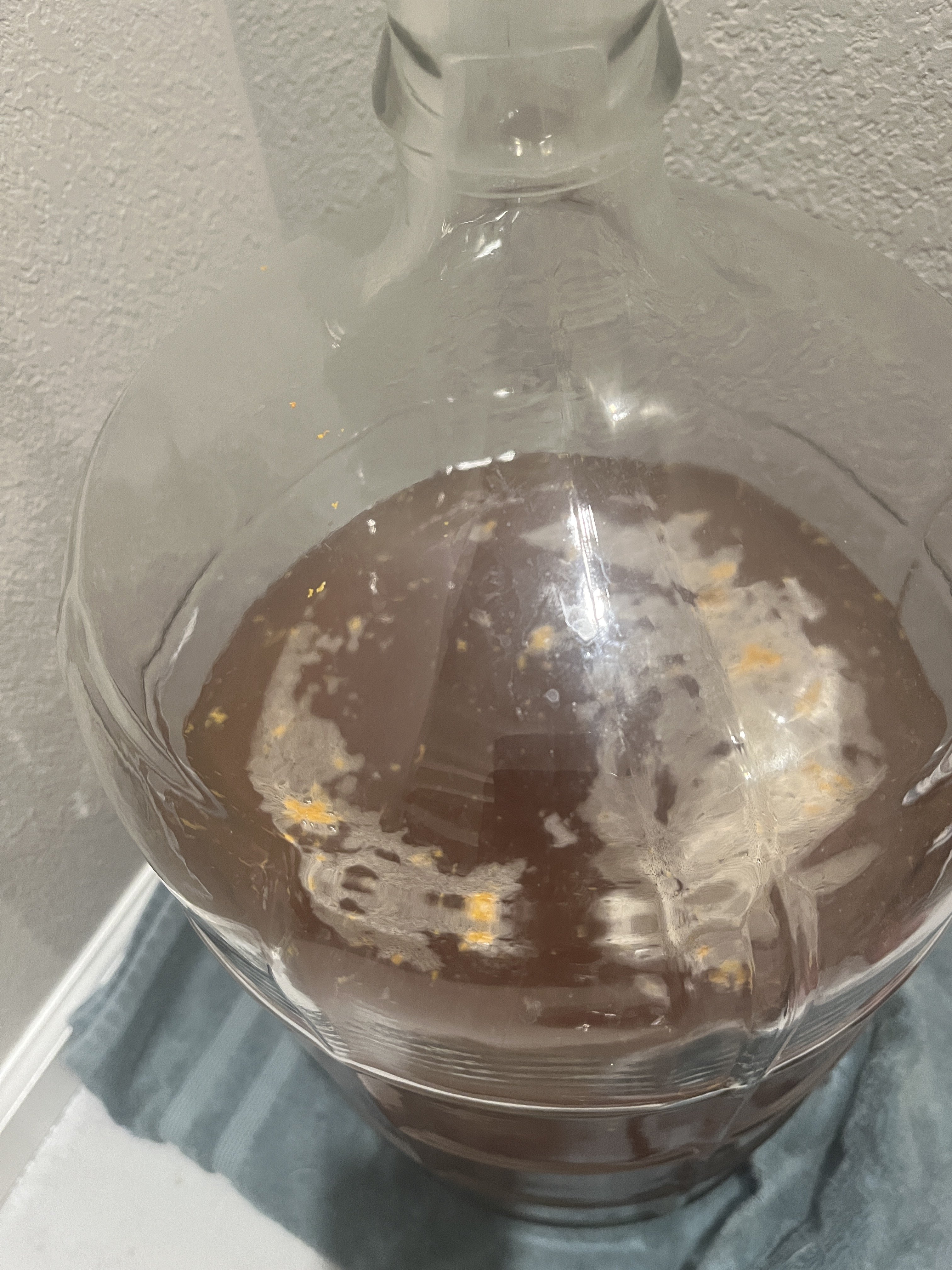chrispokey
Member
Hey folks, I'm brewing a Kolsch-style beer and added some orange zest and coriander to the secondary two days ago. simple question – is this appearance anything to be concerned of? And if so, is there something I can do about it now to mitigate any contamination or off flavors?
I'll add a bunch more context below the images.


Batch size: 5G
OG: 1.060
Hydrometer reading before racking to secondary: 1.018
Fermented and stored in secondary at 62° F
Added 1.5 tsp orange zest and 1 tsp crushed coriander to bottom of secondary before siphoning beer into secondary which are the orange floating chunks you see in the photos
As for the additions to the secondary, I thoroughly washed the fruit with fruit wash before zesting the oranges. However, I chose to not boil or soak in vodka as I read due to the levels of alcohol in the beer there's very little chance bacteria will grow assuming I take proper precautions to sanitize equipment and wash the fruit.
One other thing I'll note is that this is the first time I'm racking to a new secondary which is 6G for a 5G batch. Perhaps I should get a 5G secondary instead as the extra headspace could be another risk factor? When adding fruit I read there is a likelihood for some slight additional fermentation to take place (which I did hear some bubbling of the airlock) so I was thinking a little extra headroom could be OK, but maybe this is too much?
Anyway, I've looked at several other posts and photos of infected beer and I think I may be OK, but I'm not confident. I'm hoping this is just another one of those new-ish brewer overreactions but thought I'd get some input from the community. I have not messed with or touched the carboy since racking to secondary as I've learned it's usually best to just let it sit. That being said, if this might be an infection, is there something I can do now to make the situation better?
Thanks in advance!
I'll add a bunch more context below the images.


Batch size: 5G
OG: 1.060
Hydrometer reading before racking to secondary: 1.018
Fermented and stored in secondary at 62° F
Added 1.5 tsp orange zest and 1 tsp crushed coriander to bottom of secondary before siphoning beer into secondary which are the orange floating chunks you see in the photos
As for the additions to the secondary, I thoroughly washed the fruit with fruit wash before zesting the oranges. However, I chose to not boil or soak in vodka as I read due to the levels of alcohol in the beer there's very little chance bacteria will grow assuming I take proper precautions to sanitize equipment and wash the fruit.
One other thing I'll note is that this is the first time I'm racking to a new secondary which is 6G for a 5G batch. Perhaps I should get a 5G secondary instead as the extra headspace could be another risk factor? When adding fruit I read there is a likelihood for some slight additional fermentation to take place (which I did hear some bubbling of the airlock) so I was thinking a little extra headroom could be OK, but maybe this is too much?
Anyway, I've looked at several other posts and photos of infected beer and I think I may be OK, but I'm not confident. I'm hoping this is just another one of those new-ish brewer overreactions but thought I'd get some input from the community. I have not messed with or touched the carboy since racking to secondary as I've learned it's usually best to just let it sit. That being said, if this might be an infection, is there something I can do now to make the situation better?
Thanks in advance!
Last edited:


